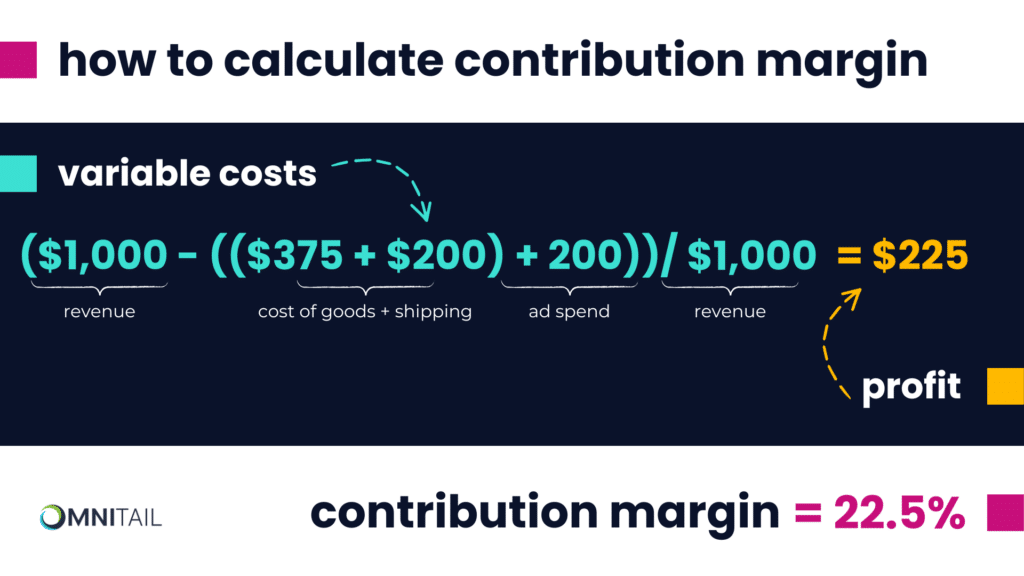We use our expertise to answer this question.
Contribution margin (aka contribution rate) is arguably one of the most important metrics to measure the financial health of an eCommerce business. Because it provides insights into the amount of profit gained (or not) after covering variable costs, it’s actually essential.
Understanding this metric helps you make informed monetary decisions, optimize pricing, control costs, and ensure consistent profitability and business growth. Without calculating contribution margin, you can’t determine your break-even point (where total revenue equals total variable costs), never mind profitability.
Calculating contribution margin is actually pretty simple:
- First, subtract your variable costs from total revenue (this is your profit)
- Then, divide that result by the total revenue (this is your contribution margin)
Marketing math for the win! Here’s an example using realistic financial data to bring it home.
Your brand accrues $1,000 in revenue from Amazon Ads in one month.
- The cost of the goods sold (COGS) averages 37% of revenue ($375)
- The monthly shipping cost for sales attributed to Amazon Ads is $200
- You spent $200 on advertising

Of the $1,000 in revenue, you take home $225 (or 22.5%) as profit. The 22.5% is your calculated contribution margin. For more information on this topic, read our blog post on what contribution margin is and why you should be tracking it.
Need additional help calculating contribution margin for your eCommerce business? Our experienced team is ready to assist! Reach out today for a free profit analysis.









